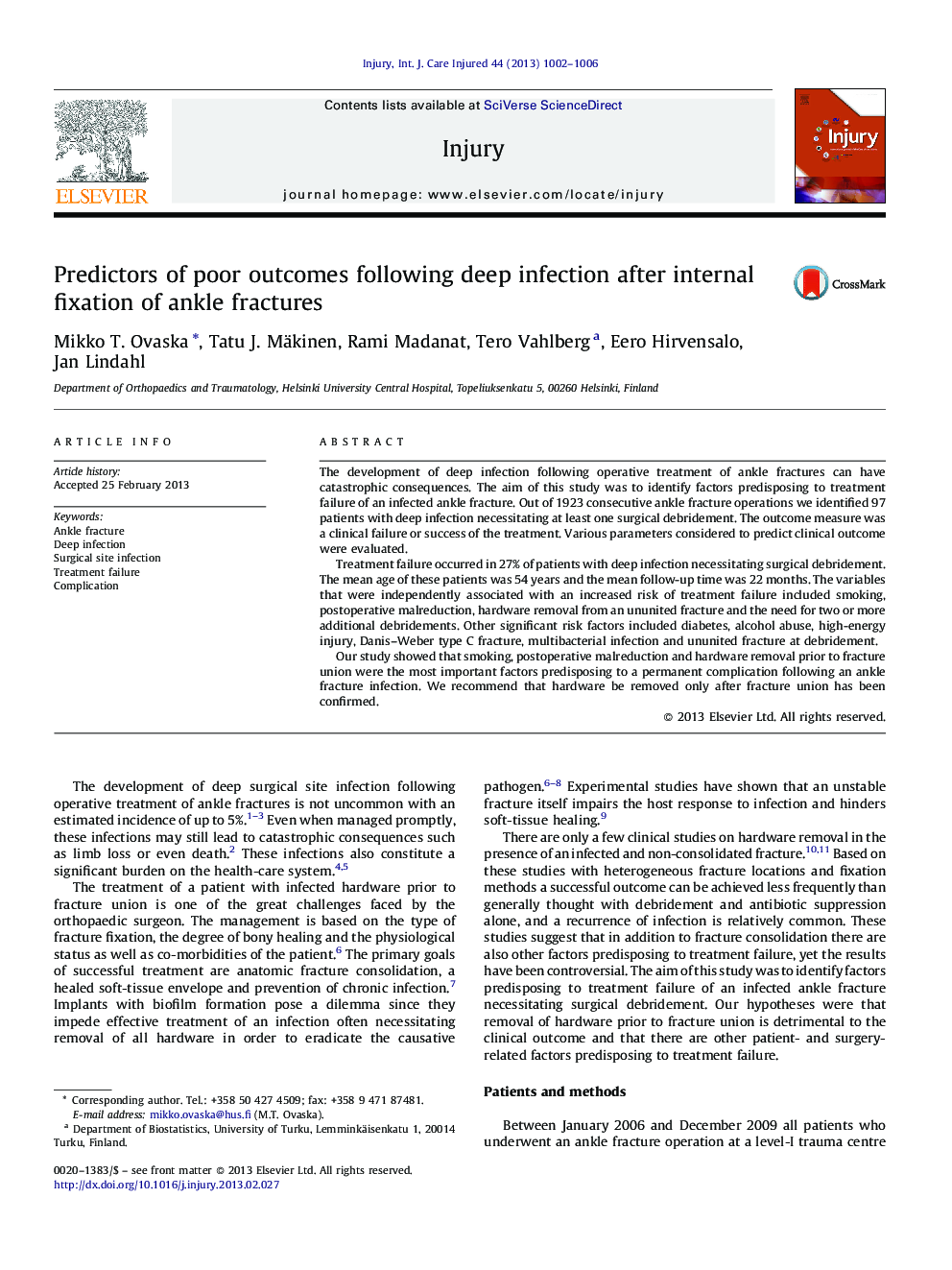| کد مقاله | کد نشریه | سال انتشار | مقاله انگلیسی | نسخه تمام متن |
|---|---|---|---|---|
| 3240426 | 1206044 | 2013 | 5 صفحه PDF | دانلود رایگان |

The development of deep infection following operative treatment of ankle fractures can have catastrophic consequences. The aim of this study was to identify factors predisposing to treatment failure of an infected ankle fracture. Out of 1923 consecutive ankle fracture operations we identified 97 patients with deep infection necessitating at least one surgical debridement. The outcome measure was a clinical failure or success of the treatment. Various parameters considered to predict clinical outcome were evaluated.Treatment failure occurred in 27% of patients with deep infection necessitating surgical debridement. The mean age of these patients was 54 years and the mean follow-up time was 22 months. The variables that were independently associated with an increased risk of treatment failure included smoking, postoperative malreduction, hardware removal from an ununited fracture and the need for two or more additional debridements. Other significant risk factors included diabetes, alcohol abuse, high-energy injury, Danis–Weber type C fracture, multibacterial infection and ununited fracture at debridement.Our study showed that smoking, postoperative malreduction and hardware removal prior to fracture union were the most important factors predisposing to a permanent complication following an ankle fracture infection. We recommend that hardware be removed only after fracture union has been confirmed.
Journal: Injury - Volume 44, Issue 7, July 2013, Pages 1002–1006